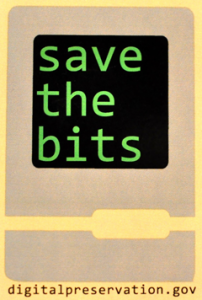 I subscribe to the Library of Congress’s blog named The Signal and saw a timely post I wanted to share…read on and remember that our ability to save your digital heritage begins with you!
I subscribe to the Library of Congress’s blog named The Signal and saw a timely post I wanted to share…read on and remember that our ability to save your digital heritage begins with you!
Ten Tips for Preserving Your Holiday Digital Memories
(http://blogs.loc.gov/digitalpreservation/2013/11/10-tips-to-preserve-your-holiday-digital-memories/)
November 27, 2013 by Mike Ashenfelder
- As soon as you can, transfer the digital files off the camera, cell phone or other device and onto backup storage. That storage could be your computer, a thumb drive, a CD, a hard drive or an online cloud service. You should also backup a second copy somewhere else, preferably on a different type of storage device than the first.
- If you have time, browse your files and decide if you want to keep everything or just cull the best ones. Twenty photos of the same scene might be unnecessary, no matter how beautiful the scene might be. And despite who is in that video, if the video is blurry and dark and shaky, you probably will never watch it again.
- When you back your files up, organize them so you can easily find them.
- Organize file folders however you want but be consistent with your system. Label folders by date, description or file type (such as “Photos” or “Thanksgiving 2013″). Organization makes it easy to find your stuff later.
- You can rename files without affecting the contents. And renaming a file will help you find it quickly when you search for it later.
- You can add descriptions to your digital photos, much as you would write a description to a paper photo. We’ve gone into depth in few blog posts, to describe how it works.
- Similarly, if you make any digital audio recordings, you can add descriptive information into the audio files themselves, information that will display in the MP3 player.
- If you have a special correspondence with someone, you can archive the emails and cell phone texts much as you would a paper letter or card.
- Remember that all storage devices eventually become obsolete; maybe you can recall devices and disks from just a decade ago that are now either obsolete or on their way out of fashion. If you have valuable files still on those obsolete media, those files become increasingly difficult to access with every passing year. So in order to keep your files accessible, you should move your collection to a new storage medium about every five to seven years. That is about the average time for something new and different to come out. At the least, if you use the same backup device frequently — like a favorite thumb drive — get a new one. Migrate your collection to new media periodically.
- Write down where you have important files, along with any passwords needed to access them, and keep that information in a secure place that a designated person can access if you are not around.
Treat your digital files responsibly, preserve those memorable moments and you can enjoy them again and again for years.
For more information on personal digital archiving, visit digitalpreservation.gov/personalarchiving/.
